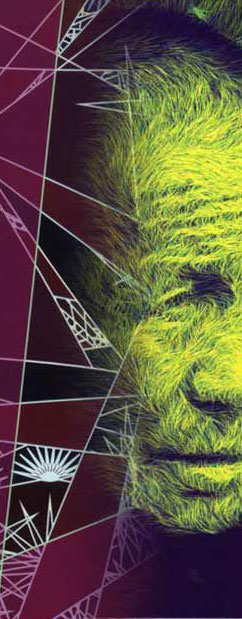David Brown
This page describes two techniques that I have developed (and coded in JAVA) for making prints. The techniques are illustrated in the image on the right.

1. Abstract images are created using mathematical models.
I have formulated mathematical models to define shapes and patterns, which are then drawn using JAVA programs. Surprisingly complex behaviour can sometimes be generated from quite simple models. An example is the Metamorphosis sequence.
2. Generalized hachure. Hachure is defined (Collins English Dictionary) as 'shading of short lines drawn on a map to indicate gradients' (from the French word hacher, to chop up). I have developed a digital technique in JAVA for producing tone in a print, and called it generalized hachure. In this method, the tonal density at each point in an original image determines the local density of individual marks in a pattern of semi-randomly positioned marks in the end print. It is possible to relate other characteristics of the marks, e.g. size, shape, direction, colour, or transparency to aspects of the original image, as well as, or instead of, the local density. Characteristics of the marks can also be manipulated in other ways to achieve a variety of effects, e.g. to get a lively surface or a particular texture, or to encode or suggest other aspects. The qualification 'generalized' indicates that this is a very flexible process: many aspects of the printed marks can be modified, in response to the initial image(s), or otherwise.
.